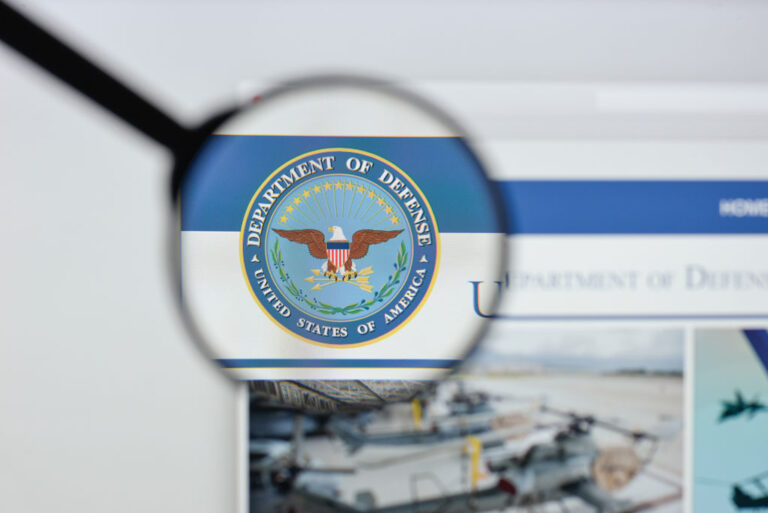MissionReady | By Marc Hoover
A Seat at the Table:
Small Business and the Future of Defense Manufacturing

American Manufacturing has been thrust into the spotlight over the last few years. President Donald Trump campaigned on a promise to bring the industry back home and make the country globally competitive once again, staying persistent in those goals as he took office.
Each of these programs depends on thousands of components, subassemblies, and specialty material that are far beyond the capacity of the major primes.
Federal law mandates that a minimum of 23% of all contracting dollars go to small businesses, representing more than $100 billion annually. These Small Business Set-Asides create a protected channel for smaller firms to compete, and win, in the defense industrial base.
Demand is moving downstream, and small to mid-size manufacturers are squarely in scope. That said, access isn’t automatic – it requires initiative and preparation.
Admin work: An Ecosystem of Codes & Online Portals
The System for Award Management, SAM.gov, is the central entry point for federal contracting. Any company looking to work with the Department of Defense will need to register early to access detailed opportunity information.
Navigating federal procurement platforms often involves jumping between multiple interconnected systems. A search on SAM.gov may quickly redirect to additional portals for documentation, proposal requirements, or final submission.
Several other platforms are also essential for manufacturers serious about defense work.
Familiarity with SAM.gov, CAGE Code Registrations, Procurement Integrated Enterprise Environment, DIBBS, Navy’s Seaport – NxG, Army’s Jagger, and Primes Registration, among others, can streamline access and improve positioning.
When you register with SAM.gov, you will be assigned a (CAGE) code by the DLA, a 5-digit identifier assigned to businesses that the government uses to track and pay suppliers. This should be done as soon as possible as other registrations, including Primes, will ask for this number.
Procurement Integrated Enterprise Environments (PIEE) are often required for submitting proposals.
Every company has their own application process, but you must be registered with them to be considered for supplier contracts. Most will have you create a supplier account that you can continually update and add capabilities as your business grows.
Navigating these portals can be tedious, enough for a small business owner wearing too many hats already to throw in the towel on defense work all together. If you’re new to defense work, understanding the maze of defense jargon and acronyms alone can require a translator.
Fortunately, there are established support systems designed to help manufacturers navigate this environment.

Ask for Help!
You will save yourself countless hours of frustration online, trying to find the information you need, just by using resources available.
Apex Accelerators is federally funded and managed by the DoD Office of Small Business Programs (OSBP). They offer no-cost guidance and support services to help your business succeed in the government marketplace, with locations all over the country.
The Manufacturing Extension Partnerships (MEP) can assist with finding grant opportunities to cover compliance costs, assistance with assigning your business NAICS codes, which are also important codes when searching databases for opportunities relevant to your business.
MEPs also have extensive networks of support and will help you find the assistance you need.
The Griffiss Institute, a non-profit located in Rome, New York, works with their neighbor, the Air Force Research Laboratory (AFRL) to develop, enable, and elevate potential defense technologies.
Mission Ready is a one-stop program built specifically for small and mid-sized manufacturers pursuing defense work. Based in Ulster County, Mission Ready is led by a team of cybersecurity specialists and military veterans who understand both the technical and operational requirements of entering the defense industrial base.
The program brings together administrative onboarding, Cybersecurity Maturity Model Certification (CMMC), and targeted bid intelligence to help manufacturers get compliant, get noticed, and win contracts.
For small and mid-sized manufacturers, this is a rare window to step into a high-value, long-term market.
Tiers of the Defense Supply Chain
Most times small and mid-sized manufacturers are not competing with major defense prime, they’re supplying them. The defense industrial base is structured in tiers, and each tier depends on a network of trusted partners to deliver on cost, quality, and compliance.
Large defense contractors like Lockheed Martin, Raytheon, and BAE Systems are considered Tier 1. Most of these Primes have online forms to fill out your company information to be added to their pool of potential suppliers.
Tier 2 companies supply components or systems to Tier 1 contractors. Many of these companies are in a flux period of compliance, waiting for official word from their Prime that they must meet CMMC compliance to maintain their contracts. The mandate is coming and trickling down. Fortunately, there is still time to get ahead of it
Smaller suppliers making parts, materials, or assemblies are Tier 3. This is where a small manufacturer can thrive, pending compliance, if they are diligently searching for opportunities.
How to Stand Out
Success in the defense supply chain depends on more than price and lead time. Buyers, whether primes or government agencies, are evaluating suppliers based on compliance, credentials, and unique capabilities.
Small manufacturers that invest early in these areas significantly improve their eligibility and competitiveness.
CMMC is no longer optional. Level 1 certification will be required to bid on most defense contracts, while Level 2 will be mandatory for any contract involving Controlled Unclassified Information (CUI). These requirements are actively rolling out and will be enforced across the supply chain.
Early compliance not only reduces risk but signal’s reliability to primes and government buyers alike.

Quality certifications like ISO 9001 and AS9100 aren’t universally required, but they are increasingly requested by primes and government buyers. Holding these certifications signals a disciplined quality management system and can open doors to higher-value contracts.
Unique capabilities like precision machining, exotic materials, rapid prototyping, or specialized coatings are major differentiators. When properly communicated, these strengths help manufacturers avoid commodity pricing and align with niche needs across programs and platforms.
Keeping your capabilities statement up to date will help resources find you the best opportunities and assistance available.
In FY24, the federal government awarded 23.3% of its budget to small businesses. This 80/20 rule for small business set-asides is projected to continue. There are additional ones within these set-asides for Women Owned Small Businesses (WOSBs), Veteran and Service-Disabled Veteran Owned Small Businesses (VOSB/SDVOSB), Small Disadvantaged Businesses (SDB) and others.
If your business falls into these categories, targeting these opportunities greatly increases your chance of winning.
A Window of Opportunity
The Department of Defense has made its priorities clear: Strengthening the industrial base depends on engaging manufacturers of all sizes.
There’s growing momentum to bring new suppliers into the fold. For small and mid-sized manufacturers, this is a rare window to step into a high-value, long-term market.
Those who act now by securing registrations, achieving compliance, and showcasing their capabilities will be well-positioned to build lasting relationships across the defense supply chain. Yes, the requirements are real, but so are the stable demand, multi-year contracts, and a direct role in national readiness.
With the right guidance and support, small manufacturers can move ahead confidently.
Visit MissionReaddy.io




